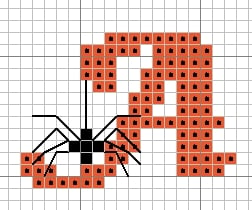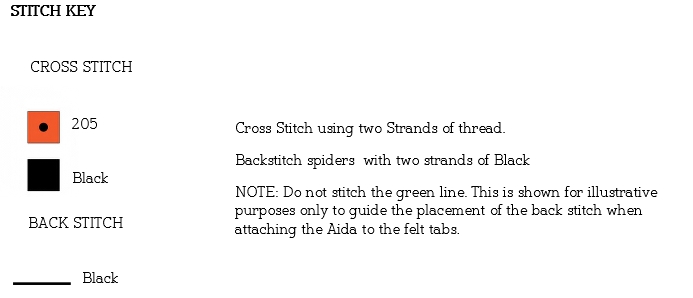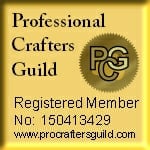Cross Stitch Basics - Using a Chart
Posted on
The Chart
Counted cross stitch is worked using a chart made up of squares, similar to graph paper. The chart may be black and white, or colour and may be plain squares or squares with symbols. Whichever option is used each square of the chart represents one full cross stitch.
Fractional stitches are half filled squares or squares with two different colours and/or symbols. If the design incorporates back stitch this will be shown on the chart as black or coloured lines, and similarly any special stitches, such as French knots, will be shown by way of a specific symbol explained in the key (see notes on the key below).
It is important to always begin stitching a design at the centre of the fabric and to assist in finding the centre on the chart most will have some indication, either by way of arrows at edge of the chart marking the mid-point of each side, or by way of two dotted lines which intersect at the centre of the design.
SAMPLE SECTION OF A CHART

The Key
Essential to understanding the chart is the key as this lists the threads used, and any additional information required to stitch the piece. It will show a sample square with the colour and/or symbol as used in the chart, next to which it will quote the thread number used. (Each embroidery thread has its own code number to identify the specific colour/shade).
The symbols and corresponding thread numbers are grouped by stitch type. For instance, if the design uses both cross stitch and back stitch the key will usually show the cross stitch element first and then then the back stitch. It will also list how many strands of thread to use for each stitch, and any other pertinent information. More complex designs may also use specialty threads and these too will be listed with their own symbol for the chart.
The designer will have used a specific make of thread when creating the piece, such as DMC or Anchor, and the codes for these threads will always be shown. Some keys will also indicate a ‘nearest match’ for other popular brands.
SAMPLE OF A BASIC KEY


